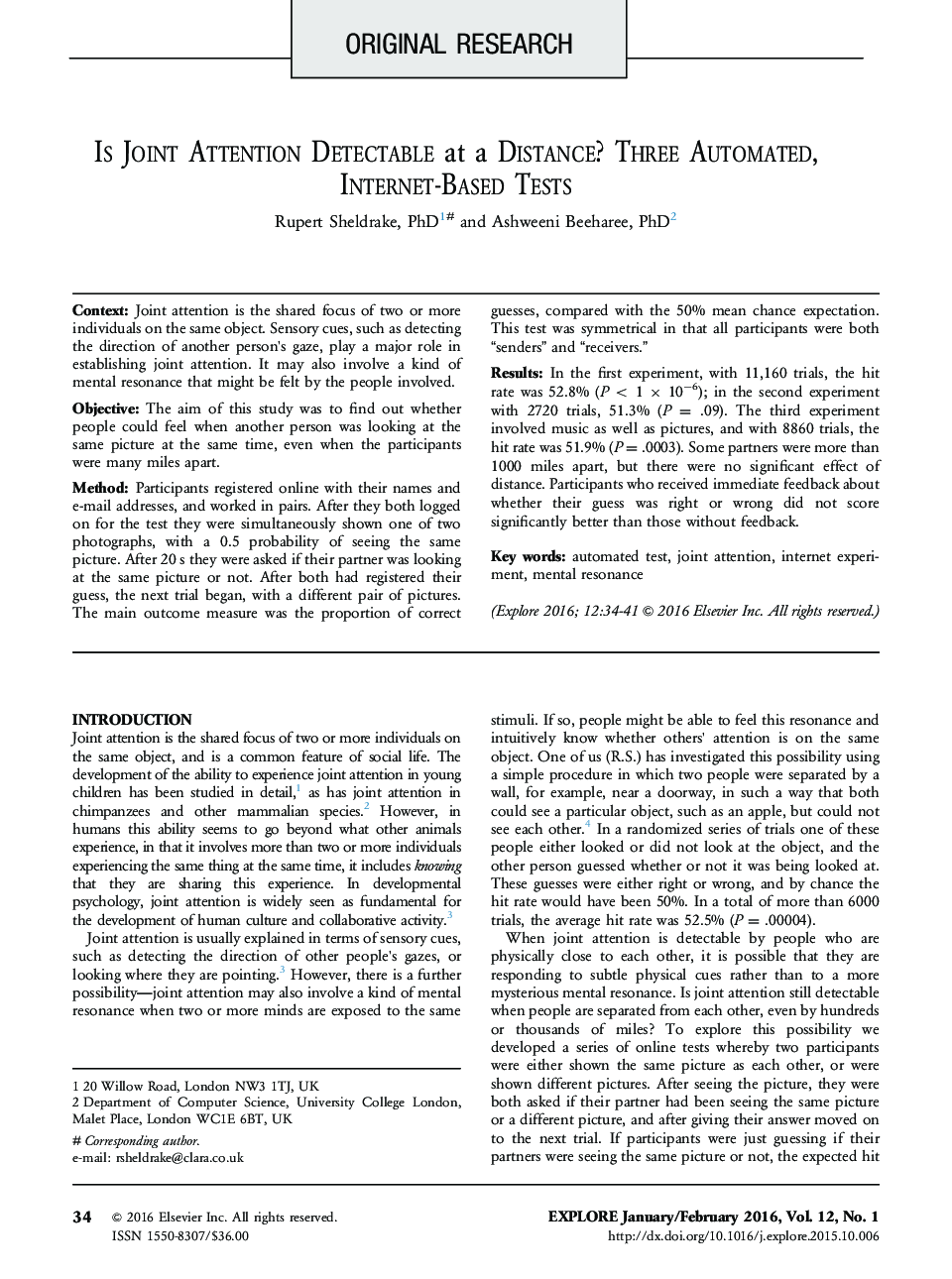| کد مقاله | کد نشریه | سال انتشار | مقاله انگلیسی | نسخه تمام متن |
|---|---|---|---|---|
| 2691641 | 1143370 | 2016 | 8 صفحه PDF | دانلود رایگان |
ContextJoint attention is the shared focus of two or more individuals on the same object. Sensory cues, such as detecting the direction of another person׳s gaze, play a major role in establishing joint attention. It may also involve a kind of mental resonance that might be felt by the people involved.ObjectiveThe aim of this study was to find out whether people could feel when another person was looking at the same picture at the same time, even when the participants were many miles apart.MethodParticipants registered online with their names and e-mail addresses, and worked in pairs. After they both logged on for the test they were simultaneously shown one of two photographs, with a 0.5 probability of seeing the same picture. After 20 s they were asked if their partner was looking at the same picture or not. After both had registered their guess, the next trial began, with a different pair of pictures. The main outcome measure was the proportion of correct guesses, compared with the 50% mean chance expectation. This test was symmetrical in that all participants were both “senders” and “receivers.”ResultsIn the first experiment, with 11,160 trials, the hit rate was 52.8% (P < 1 × 10−6); in the second experiment with 2720 trials, 51.3% (P = .09). The third experiment involved music as well as pictures, and with 8860 trials, the hit rate was 51.9% (P = .0003). Some partners were more than 1000 miles apart, but there were no significant effect of distance. Participants who received immediate feedback about whether their guess was right or wrong did not score significantly better than those without feedback.
Journal: EXPLORE: The Journal of Science and Healing - Volume 12, Issue 1, January–February 2016, Pages 34–41
